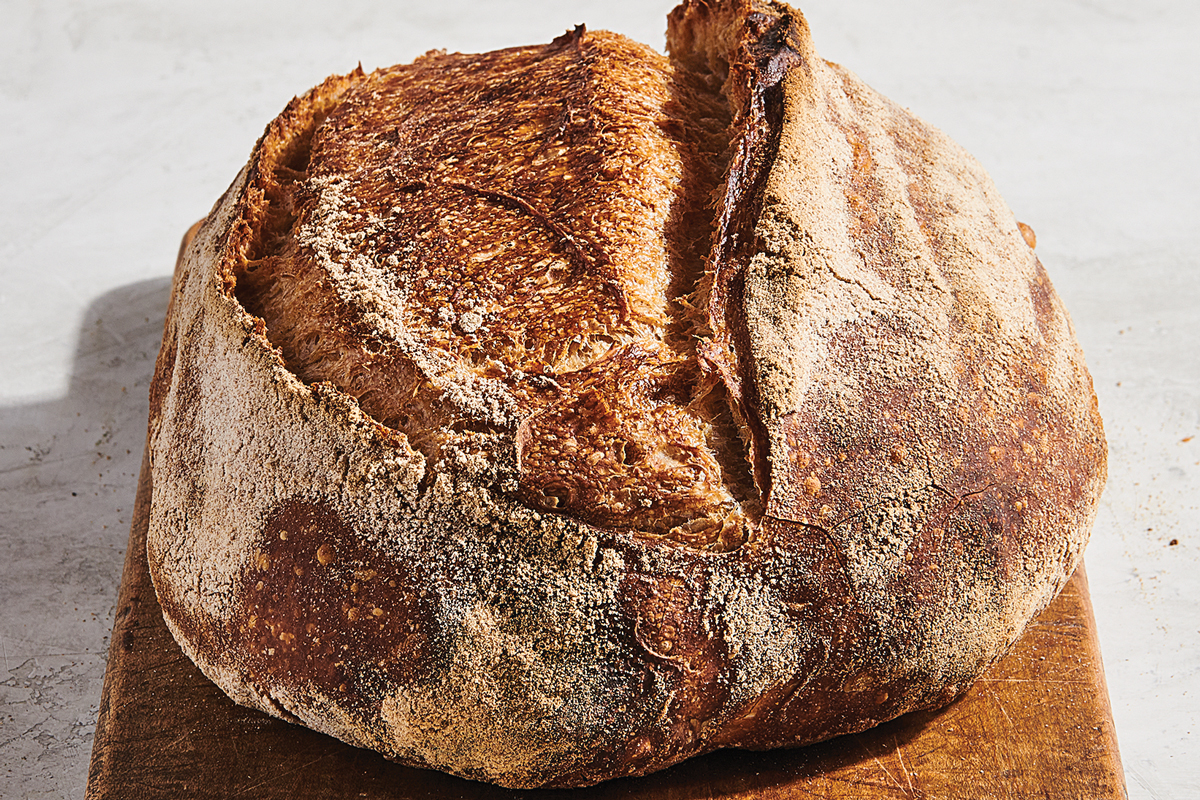Haha, okay. An English cottage loaf is just two balls of dough, one on top of the other. Kind of looks like an old lady with her hair in a bun.

I think it came about because a few hundred years ago people didn’t have ovens. They used to bake bread in a nook in the hearth or take it to a community oven at the bakehouse. Space was cramped, so loaves had to be tall rather than wide, hence the shape. It’s difficult to bake in a home oven because of the awkward shape but probably worked well back then.
I think Paul Hollywood has a recipe online and like most recipes it calls for the bread to be dusted with flour but the ones from my childhood were egg washed and sprinkled with poppy seeds so that’s what I’ve done.
I made a 60% hydration dough with 500g flour. The only difference was I added a couple of teaspoons of vegetable shortening, as that’s what Elizabeth David stipulates but I’m not sure it did much! After the first rise, you separate a third of the dough and shape the two pieces of dough into big roll shapes. (Depending on what part of the UK you’re from, you might call it a roll or a cob or a bap or a batch or a bun or a barm - it all means ‘bread roll’) Try to use no or minimal flour or the two bits of dough won’t fuse. Leave for 10 minutes and re-shape then leave to proof. You need it slightly under-proofed so it doesn’t collapse.
Then you have to work quickly. You take the big piece of dough and flatten the top slightly and cut a cross in the top, an inch or two big. Then take the smaller piece of dough and place it upside down on the big bit of dough, then with floured hand, make a kind of cone shape with your thumb and first two fingers, like you’re going to do a bird beak shadow puppet! Push your fingers straight down through both bits of dough almost to the bottom. Fortunately I’ve got a dough mixing tool that has the perfect shape handle for this so I just used that instead! Then egg wash and sprinkle with seeds before cutting eight slashes on both rolls. Then pop straight into a hot steamy oven for 15 minutes (about 230C) then turn it down to about 190C for 20-30 minutes.
It‘s a hugely impractical shape for bread baking but very pretty and quite nostalgic for me! I just sent a pic to my older sister and she loved it too - I’d forgotten we’d had it at our grandparents’ house.
 View attachment 3873
View attachment 3873

www.kingarthurbaking.com
